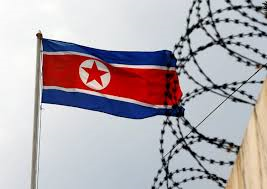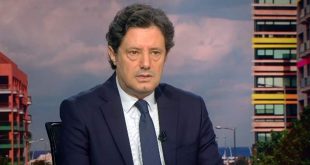Photos and infrared imaging indicate vehicles moving in and out of the facility at Sanumdong
North Korea has pressed ahead with construction at the factory that produced the country’s first intercontinental ballistic missiles capable of reaching the US, despite ongoing negotiations over the fate of its nuclear and missile programs.
US spy satellites captured photos and infrared imaging indicating vehicles moving in and out of the facility at Sanumdong, but do not show how advanced any missile construction might be, a US official told Reuters on condition of anonymity because the intelligence is classified.
The Washington Post reported on Monday that North Korea appeared to be building one or two new liquid-fuelled intercontinental ballistic missiles at the large research facility on the outskirts of Pyongyang, citing unidentified officials familiar with intelligence reporting.
According to the US official who spoke to Reuters, one photo showed a truck and covered trailer similar to those the North has used to move its ICBMs. Since the trailer was covered, it was not possible to know what, if anything, it was carrying.
The White House said it did not comment on intelligence.
The evidence obtained this month is the latest to suggest ongoing activity in North Korea’s nuclear and missile facilities despite talks with the United States and a June summit between North Korean leader Kim Jong-un and US President Donald Trump.
Mintaro Oba, a former US diplomat who worked on North Korea policy, said: “It reflects an important fact: despite what US officials have been saying, North Korea didn’t commit to much of anything on denuclearisation.
“It’s not surprising that North Korea would want to proceed with elements of their nuclear and missile programs until a real deal is reached. They’re not just going to stop because we had a summit.”
Trump declared soon afterward that North Korea no longer posed a nuclear threat. Kim committed in a broad summit statement to work toward denuclearization, but Pyongyang has offered no details as to how it might go about that and subsequent talks have not gone smoothly.
North Korean officials are also mulling disposing of a limited number of nuclear warheads in a deal with the US, while secretly maintaining a nuclear arsenal, according to US intelligence reported by the Washington Post.
It was not the first time US intelligence has clashed with the president’s optimism.
In late June, US officials told US media outlets that intelligence agencies believed North Korea had increased production of fuel for nuclear weapons and that it did not intend to fully give up its nuclear arsenal. Just weeks after the summit, commercial satellite images showed the North was upgrading its only know nuclear power plant, the source of fuel for its weapons program.
US Secretary of State Mike Pompeo told the US Senate foreign relations committee last week that North Korea was continuing to produce fuel for nuclear bombs despite its pledge to denuclearise. But he insisted the Trump administration was still making progress in its talks with Pyongyang.
Joel Wit, a former State Department negotiator and founder of 38 North, a North Korea monitoring project, said it was unrealistic to expect North Korea to stop its programs “until the ink is dry on an agreement.“
That was the case with US negotiations with the Soviet Union during the Cold War, and more recently with Iran, “which continued to build more centrifuges capable of producing nuclear material even as it negotiated with the United States to limit those capabilities,” Wit said.
The Sanumdong factory produced two Hwasong-15 ICBMs, North Korea’s longest-range missiles, but the US official noted that Pyongyang still had not tested a reliable re-entry vehicle capable of surviving a high-velocity trip through the Earth*s atmosphere and delivering a nuclear warhead.
It is possible, the official said, that any new missiles the North is building may be for further testing of such vehicles and of more accurate guidance systems.
“They seem to have figured out the engines, but not all the higher-tech stuff, and that might be what this is about,” the official said.
The Guardian
 Lebanese Ministry of Information
Lebanese Ministry of Information



